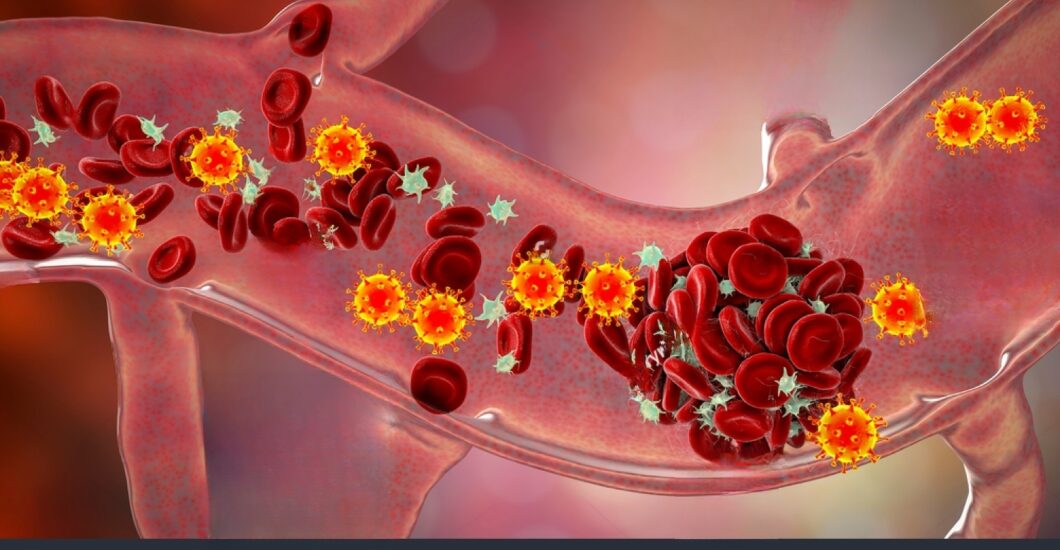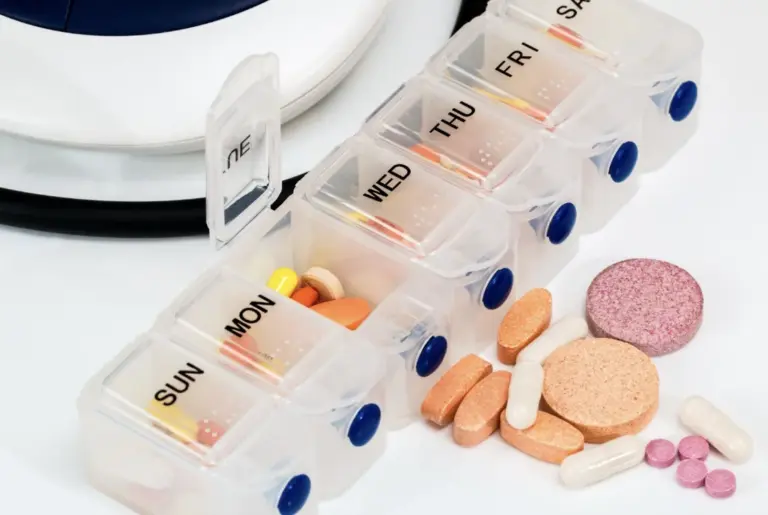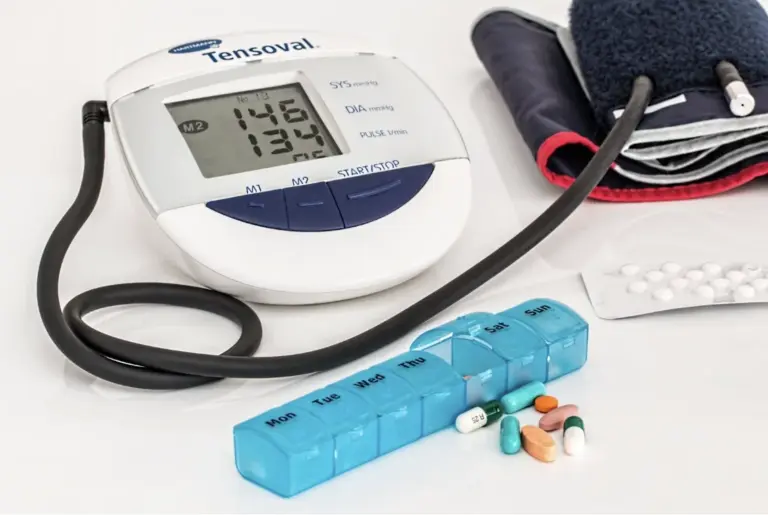What is Vasoconstriction?
Vasoconstriction definition states that it is the narrowing of blood vessels, specifically arteries and arterioles. It happens when the smooth muscles in the blood vessel walls contract, causing the vessel’s diameter to shrink. The restriction of blood arteries reduces blood flow to a specific location in the body.
Vasoconstriction can be caused by various factors such as cold, stress, lifestyle habits such as cigarette smoking or drugs, or underlying medical problems like Raynaud’s phenomenon.
How is Vasoconstriction different from Vasodilation?
Vasoconstriction meaning is defined as the process that involves the constriction of blood vessels, specifically arteries and arterioles. Vasoconstriction decreases blood flow to a specific location of the body and can result in high blood pressure. In contrast to that, vasodilation is the widening of blood vessels. It occurs when the smooth muscles in the vessel walls relax, allowing the vessel to expand. Vasodilation increases blood flow to a specific area, improving oxygen and nutrient delivery to tissues. It also helps dissipate heat from the body.
Signs and Symptoms of Vasoconstriction
The Symptoms of Vasoconstriction can includes:
- Cold Skin: Reduced blood flow to the skin can lead to a noticeable drop in skin temperature, resulting in cold or cool skin in the affected area. This symptom is particularly pronounced in cases of vasoconstriction related to hyperthermia.
- Numbness and Tingling: Diminished blood flow can also result in sensations of numbness and tingling in the affected region, which can be exacerbated in people with conditions like pulmonary hypertension.
- Pale or Bluish Skin: In areas where the blood supply is compromised, the skin may appear pale or bluish, a condition known as cyanosis. This discolouration is due to inadequate oxygen delivery and can be a sign of reduced perfusion, as seen in pulmonary hypertension.
- Pain and Discomfort: Vasoconstriction can lead to localised pain or discomfort, especially if it restricts blood flow to muscles or organs. This can appear as cramping or aching sensations in parts of the body, which is a symptom that can also occur in cases of blood clot
- Elevated Blood Pressure: Systemic vasoconstriction, which affects larger arteries, can lead to increased blood pressure. The heart has to work harder to pump blood through narrowed vessels, contributing to hypertension and increasing the risk of stroke.
Causes of Vasoconstriction
Vasoconstriction can be caused by a number of health causes such as:
- Hormones: Stress hormones like adrenaline and norepinephrine released during the body’s “fight or flight” response can trigger vasoconstriction. This redirection of blood flow helps the body prepare the system for a rapid response to perceived threats.
- Cold Temperatures: Exposure to cold can prompt blood vessels near the skin’s surface to constrict, reducing heat loss. This physiological response helps conserve body heat and maintain core temperature.
- Medications: Some medications, such as decongestants and certain blood pressure medications, can induce vasoconstriction as a side effect. Decongestants work by narrowing blood vessels in the nasal passages to relieve congestion, but they can also affect systemic blood vessels.
- Inflammation: Inflammatory processes within the body can stimulate vasoconstriction as part of the body’s defence mechanisms. This constriction can help limit blood loss and reduce the spread of pathogens during an infection or injury.
- Smoking: Nicotine, a key component of tobacco products, is a vasoconstrictor. Smoking leads to nicotine exposure, which can cause blood vessels to narrow. This also contributes to the other health risks associated with smoking, including cardiovascular problems.
Treating vasoconstriction or constricted blood vessels
To treat Vasoconstriction, the doctor might use an integrative approach focusing on the following
Addressing Underlying Conditions: When dealing with vasoconstriction, it’s crucial to identify and address any underlying medical conditions that contribute to this narrowing of blood vessels. Two common underlying conditions are hypertension and atherosclerosis.
- Hypertension (High Blood Pressure): If you have high blood pressure, it means that the force of blood against the walls of your arteries is consistently too high. Over time, this can lead to damage to the arterial walls, making them more prone to vasoconstriction. Managing hypertension involves lifestyle changes, medications, and regular monitoring of blood pressure to prevent further narrowing of blood vessels.
- Atherosclerosis: This is a condition where fatty deposits, cholesterol, and other substances accumulate on the inner walls of arteries. These deposits, called plaques, can narrow the arteries and restrict blood flow. Managing atherosclerosis also includes lifestyle modifications, medications to control cholesterol levels, and sometimes procedures like angioplasty to open up blocked arteries.
Lifestyle Modifications: Lifestyle changes play a significant role in improving vascular health and preventing vasoconstriction-related issues. Here are some key aspects of lifestyle modifications:
- Quitting Smoking: Smoking is a major risk factor for vasoconstriction-related conditions, including atherosclerosis and hypertension. Quitting smoking not only reduces the risk of vasoconstriction but also lowers the overall risk of heart disease and stroke.
- Maintaining a Healthy Weight: Excess body weight, particularly abdominal obesity, can contribute to vasoconstriction and other cardiovascular problems.
- Balanced Diet: A diet rich in fruits, vegetables, whole grains, lean proteins, and healthy fats can help maintain vascular health. Reducing the intake of saturated and trans fats, and sodium (salt), and processed foods can lower the risk of vasoconstriction-related conditions.
Medications: In cases where vasoconstriction is severe or directly related to specific medical conditions, the doctor can prescribe medications that promote vasodilation. These medications help relax blood vessel walls and improve blood flow.
Cardiovascular Fitness: Aerobic exercises like walking, running, swimming, and cycling improve cardiovascular fitness and promote vasodilation. They also help maintain healthy blood vessels by increasing blood flow.
Muscle Tone: Strength training exercises enhance muscle tone, including the smooth muscles in blood vessel walls, potentially reducing the risk of vasoconstriction.
Stress Management: Stress can trigger vasoconstriction through the release of stress hormones like adrenaline and norepinephrine. Stress management techniques can help mitigate the impact of stress on blood vessels:
- Relaxation Exercises: Techniques such as progressive muscle relaxation and guided imagery can induce physical and mental relaxation, reducing the body’s stress response.
- Deep Breathing: Deep, slow breaths can calm the nervous system and lower stress hormone levels, preventing excessive vasoconstriction.
- Meditation: Mindfulness meditation and other meditation practices can help reduce stress and improve overall mental well-being, indirectly benefiting vascular health.
To learn more about the causes, treatments and management. It is best to consult a doctor. To find a doctor near you who can guide you on a journey to better heart health, you can also visit Bp in Control’s Find a Physician page. Get in touch with a specialist near you right now!
Disclaimer
The information contained in this article is to educate, spread awareness in relation to hypertension and other diseases to the public at large. The contents of this article are created and developed by BPinControl.in through its authors, which has necessary, authorisations, license, approvals, permits etc to allow usage of this articles on The Website. The views and opinions expressed in this article are views, opinions of the respective authors and are independently endorsed by doctors. Although great care has been taken in compiling and checking the information in this article, The Website shall not be responsible, or in any way liable for any errors, omissions or inaccuracies in this article whether arising from negligence or otherwise, or for any consequences arising therefrom. The content of this article is not a substitute for any medical advice. The Website shall not be held responsible or liable for any consequence arising out of reliance on the information provided in the article.




